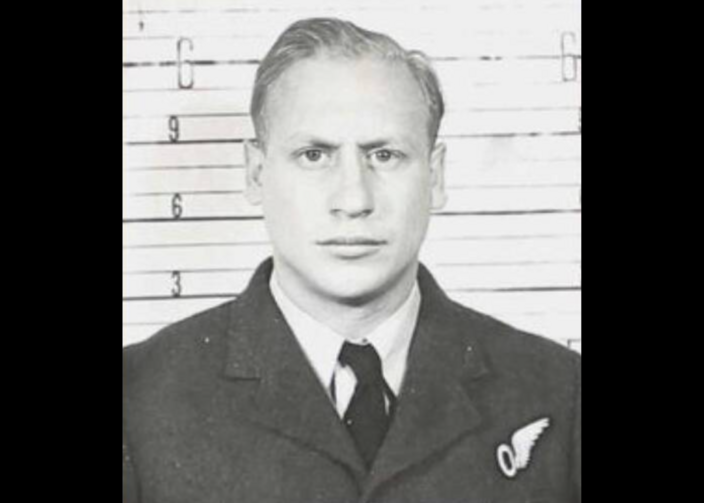Review: The story of Thomas Merton’s forgotten brother
Once in a great while, a book comes along that, even for the devoted Thomas Merton fan (we are legion) reveals something surprising about one of the most written-about Catholics in the modern age. In 2007, James Harford’s Merton and Friends shed light on the intimate relationships between Merton and his college buddies Ed Rice and Thomas Lax. That fascinating book showed us a young and surprisingly ambitious Merton in his salad days.
Remembering the Forgotten Merton, by the psychologist William J. Meegan, is a brief biography of Merton’s brother John Paul, whom Merton fans know primarily through the powerful elegy that Merton composed to mark his brother’s death as a fighter pilot in the Second World War. It is one of Merton’s most moving poems: “Sweet brother,” it begins, “if I do not sleep/ My eyes are flowers for your tomb.”
In Merton’s best-selling memoir The Seven Storey Mountain, his younger and only brother remains a shadowy figure, held at arm’s length from Tom’s heart. (I’m going to call them Tom and John Paul, as Meegan does.) In a memorable passage in The Seven Storey Mountain, Tom describes his brother, then five years old, desperate to play with Tom and Tom’s friends. They reject him by throwing rocks at him. This always struck me as, while perhaps typical of some older siblings, almost unbearably cruel. Tom describes his brother’s reaction: “And there he stands, not sobbing, not crying, but angry and unhappy and offended and impossibly sad.” This would, sadly, be a pattern in their relationship.
In Meegan’s telling, Tom is a cool, aloof and occasionally selfish brother. John Paul, who would lead a wandering life, struggled academically and always seemed to be searching for something to interest him until landing in the military (he enlisted in Canada because the United States had not yet entered the war). He also suffered from a lack of interest—if not rejection—from his brother. Meegan points out that John Paul would probably have been annoyed by the lines in Tom’s poem describing him as a “poor traveler,” “unhappy spirit” and a person with a “weak and friendless hand.” As Meegan notes, the affable John Paul was no wallflower; he had a talent for friendship throughout his life.
Reading this book, one can’t help but wonder: If a canonization process is begun, which Merton should be considered first?
But the real revelation of this short book is the portrait of Owen Merton, the boys’ father. Merton fans will already know that Owen, a New Zealander and talented painter, led a peripatetic life after the death of his wife, Ruth. Tom paints that picture in The Seven Storey Mountain, even if his readers may have a hard time following Owen between France, New York (where Ruth’s parents lived) and Bermuda. What is new in this book, at least for me, is the inescapable fact that Owen Merton was almost entirely unsuited to be a parent.
And here John Paul suffers far more than Tom who, by virtue of a few years, was the favored older son who accompanied the father, while John Paul remained with his grandparents in Douglaston, Long Island. The only time that the young John Paul would see Tom after his mother’s death was on summer vacations. From October 1921, when Ruth died, until August 1925, John Paul would live with his father for only eight months. Meegan sums it up: “John Paul was left by his father in the hands of his loving grandparents but the message was clear: John Paul was not a significant part of his father’s life.”
Meegan uses his psychological training to speculate on how this might have affected John Paul in later years. (Sometimes he speculates too much, one of the book’s rare misfires.) But there is no doubt that this forlorn situation contributed to John Paul’s sense of anomie.
This makes it even more remarkable that John Paul was, as I have mentioned, by most accounts, a sunny person whom others gravitated toward. Near the end of his short life, he also discovered within himself a desire to become Catholic. As Tom’s readers will know, his instruction took place during a brief visit to the Abbey of Gethsemane with his brother, where he was also received into the church. Despite Tom’s cool attitude towards him, John Paul seemed still to love and respect his brother.
His life ended tragically, if heroically, at age 24, after being married for 54 days to a woman he met while stationed in England. During a bombing mission in 1943, on a Royal Air Force aircraft, both engines failed and his plane crashed into the English Channel. John Paul apparently broke his back yet tried valiantly to support a fellow pilot, with sea water entering into his mouth every time he shouted for help. One of his comrades called it “an extreme act of bravery and selflessness which should have been recognized.” His comrades pulled him aboard a dinghy, where, “Most of the time left he spent in prayer.”
This beautiful book not only tells an important part of Tom’s history but also restores to the public eye the life of a good, sweet and heroic person. Reading it, one can’t help but wonder: If a canonization process is begun, which Merton should be considered first?
The Rev. James Martin, S.J., is a Jesuit priest, author and editor at large at America.







No comments:
Post a Comment